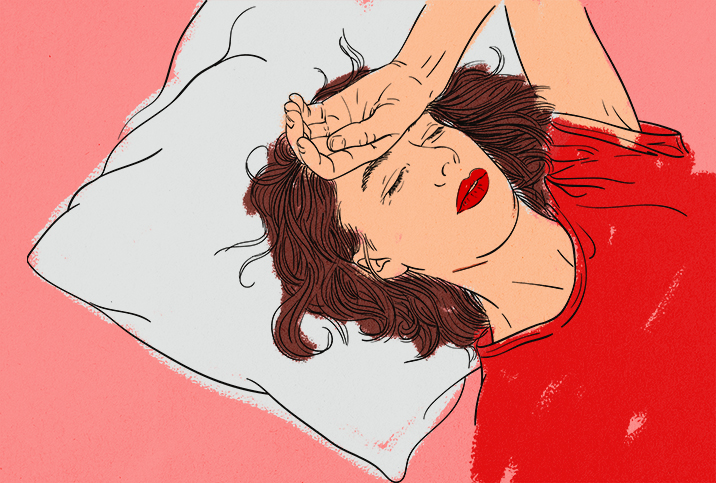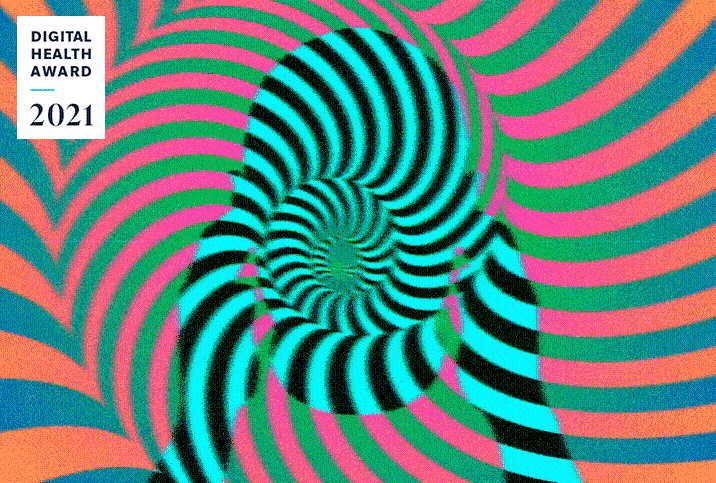You May Not Know It…but You Have a Migraine

We know migraine disorder is a neurological disease that impacts how the brain processes pain and we also know it affects about 35 million Americans. More than 40 percent of women and almost 20 percent of men experience migraine headaches at some point in their lives.
Additionally, a majority of people report migraines between the ages of 35 and 45.
Migraines can primarily affect your psychological and physical health, but can also have good and bad effects on your sexual health. Based on a research study published in 2013 surveying 1,000 patients who experienced migraines, 34 percent were familiar with having sex during a migraine and 60 percent of these people reported an improvement in their migraine attack.
One theory is that sexual activity provides enough distraction to relax someone from symptoms stemming from a migraine. However, there is also speculation that endorphins released during sex and orgasm may help relieve the pain of a migraine.
Conversely, since sex requires physical involvement, a migraine may be exacerbated by pressure on the back and neck, and the increase in blood pressure may trigger migraine symptoms.
It's common for people having a migraine episode to assume they're experiencing a different type of headache or even a different medical condition entirely. A study published in 2004 indicated 88 percent of people who think they have a sinus headache actually have a migraine.
This difficulty in identifying migraines is further confused by the fact that there are several different types of migraines. For example, migraine episodes can occur with aura or without aura. A person might begin seeing auras but never progress to having a headache. People who have migraine episodes with aura might eventually experience vertigo, dizziness, slurred speech, ringing in the ears and double vision, as in the case of migraine with brainstem aura. A migraine disorder can be either chronic (15 or more headache days per month) or episodic (one to 14 headache days per month).
There are other types of migraines that seem far outside the realm of your typical neurological disorder.
"Migraine variants are definitely harder to diagnose and often go unrecognized," said Lauren R. Natbony, M.D., medical director of Integrative Headache Medicine of New York and an assistant professor of neurology at the Icahn School of Medicine at Mount Sinai in New York City.
Here's a guide to the migraine family so you can better determine which disorder you're experiencing:
Abdominal migraine
An abdominal migraine is most common in children ages 7 to 10 and, as the name suggests, is marked primarily by abdominal pain rather than head pain.
"The main symptom is moderate to severe dull or achy pain around the belly button, with attacks lasting between one hour and three days," Natbony said.
Associated symptoms can include nausea, vomiting, appetite loss and pale skin, she added.
The symptoms of an abdominal migraine are similar to those of other gastrointestinal conditions, so people suffering from these episodes may tend to treat it as any other stomach ailment. The difference is that abdominal migraine symptoms come on acutely and in limited episodes, with long stretches of relief in between, she explained.
When it is finally diagnosed, an abdominal migraine is often a diagnosis of exclusion, which means all other possibilities were ruled out.
Vestibular migraine
A vestibular migraine is another type of migraine disorder in which head pain is not the predominant symptom. Instead, patients experience recurrent episodes of temporary vertigo, marked by sensations of spinning, rocking, floating or being off-balance.
People may experience a headache, light and sound sensitivity, and/or nausea and vomiting, but these symptoms aren't guaranteed.
"As with abdominal migraine, vestibular migraine is difficult to diagnose and, because of this, often goes untreated," Natbony said.
Hemiplegic migraine
A rare type of migraine—with a reported prevalence of 0.1 percent—a hemiplegic migraine manifests as temporary paralysis on one side of the body.
The primary marker of this form of migraine is sometimes accompanied by some of the more common aura symptoms, such as visual disturbances and slurred speech. People may experience dizziness or vertigo, hearing problems and/or confusion, too. The weakness or paralysis experienced on the side of the body can last anywhere from one hour to several days and is sometimes followed by a headache.
As you might imagine, it can be especially alarming to have a hemiplegic migraine episode, as the symptoms are so similar to those of a stroke. Brain imaging is usually required to rule out other possible disorders.
Menstrual migraine
There is a link between migraines and hormonal changes. In fact, menstruation is considered a common trigger of migraine attacks. As Natbony explained, estrogen levels rise during the first half of a woman's menstrual cycle and then drop rapidly leading up to menstruation. This rapid drop is thought to trigger the release of neurochemicals, which can lead to a migraine attack.
A menstrual migraine is considered its own category of migraines. Attacks differ from other migraine episodes in that they can be more severe and less responsive to treatment, and can last longer than other types of migraine.
Research suggests fewer than 1 in 10 women experience true menstrual migraines, which occur only during menstruation.
To figure out if you suffer from menstrual migraines, keep track of your migraine episodes for at least three months and see if there's a correlation between these episodes and the days you menstruate. Menstrual migraine episodes typically occur between two days before and up to three days into menstruation, in at least two to three consecutive menstrual cycles.
Retinal migraine
A retinal migraine, also known as an ocular migraine, is an eye condition that causes brief attacks of full or partial blindness or other visual disturbances in just one eye. This stands in contrast to your average migraine with aura, which typically affects both eyes.
Typically, retinal migraine episodes are brief—about 10 to 20 minutes—and eyesight should return to normal afterward.
A retinal migraine is caused by decreased blood flow to the eye. It can be triggered by everything from stress and high blood pressure to smoking, dehydration and low blood sugar to high altitudes, excessive heat and more. Headaches can also occur.
As is the case with many health conditions, there's no such thing as a typical migraine disorder. Even if two people have the same condition, they may experience different symptoms.
Familiarizing yourself with the many variations of migraine disorders could help you recognize a future attack and, as a result, get the help you need faster.


















